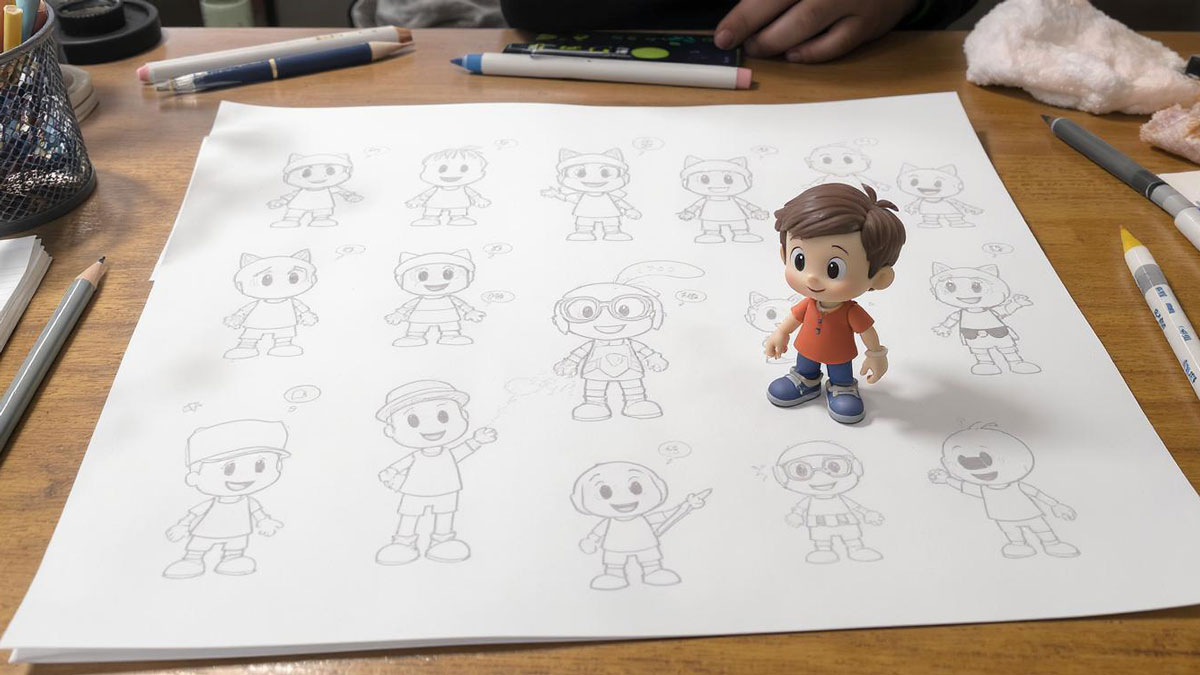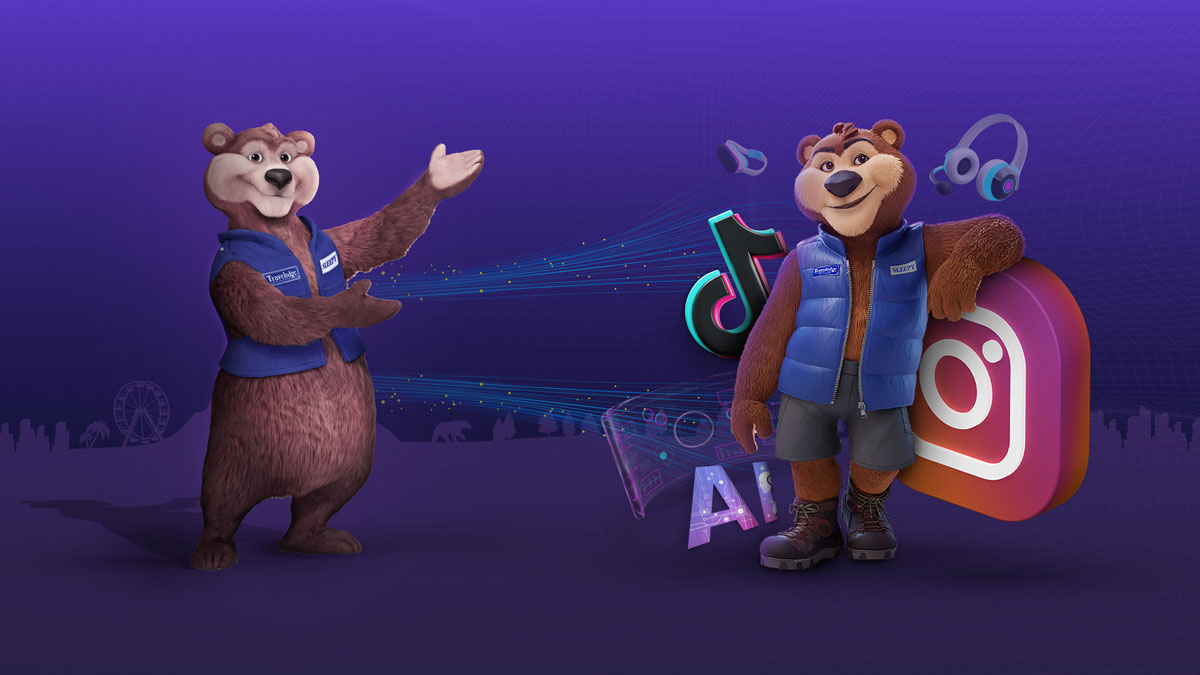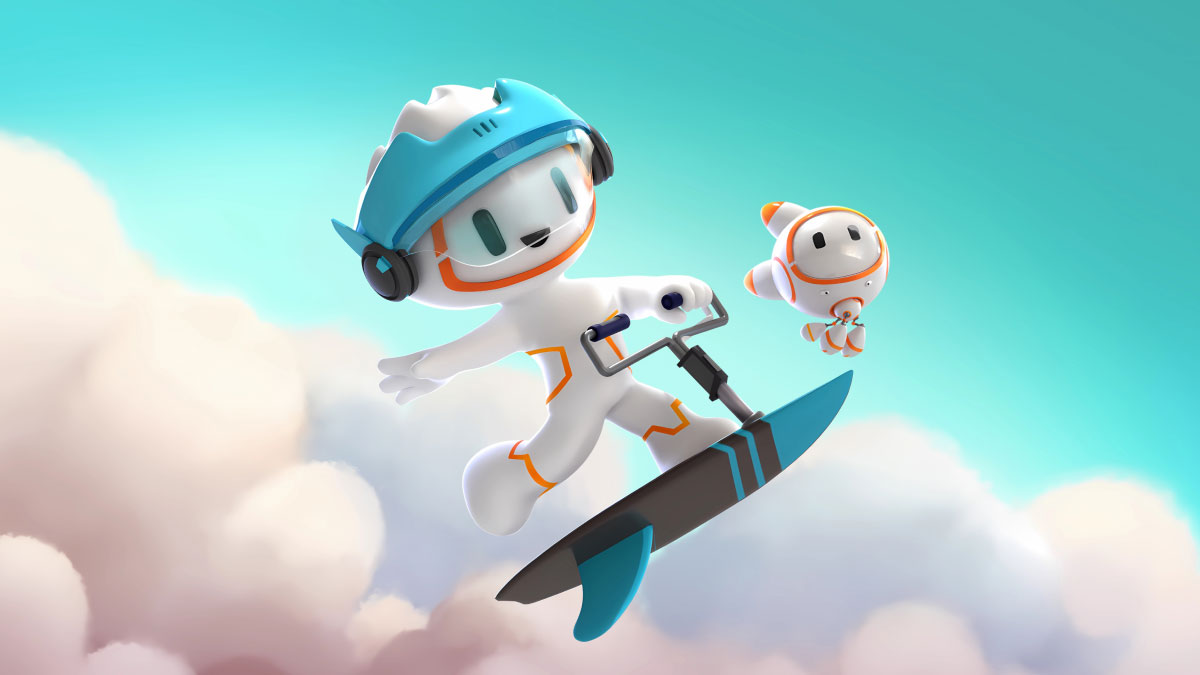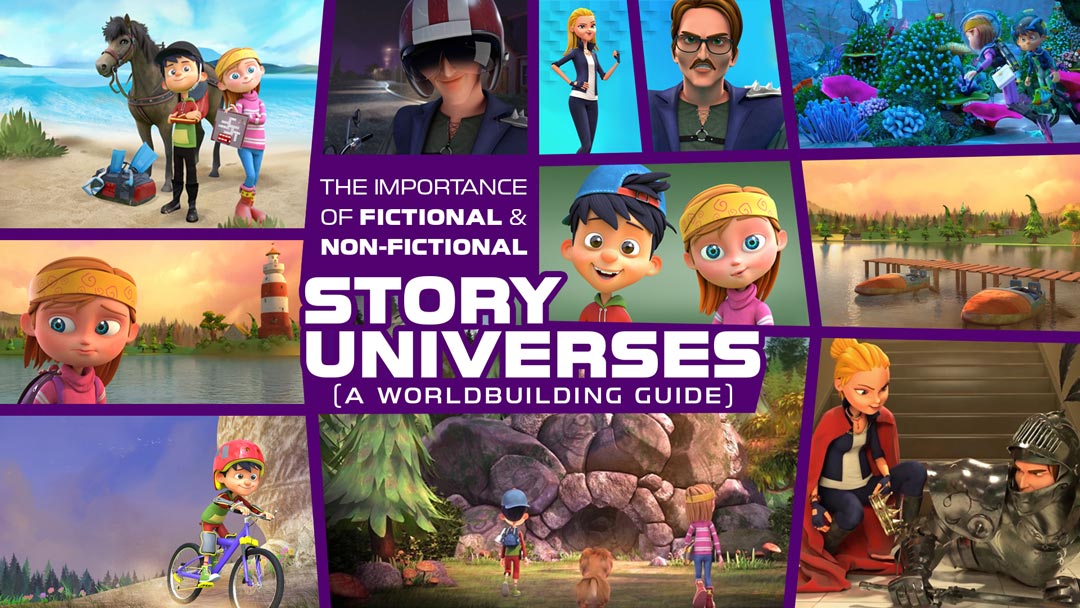
Story worlds let you travel without even moving your feet.
We’ve come to terms with our world with all its good and bad, but the sense of adventure drives us to immerse ourselves in different worlds.
Because there’s too much to explore in those universes that we don’t see here.
None of us knew we cared about hobbits and dwarfs before we were introduced to their world in The Lord of The Rings.
Or an open-world game as big as three American cities with tons of activities to do under the name of Grand Theft Auto.
While some are very similar to ours, others are so imaginary that they get us out of touch with reality.
With the writing of this article, we wish to share why these worlds are important for authors, directors, and businesses and pass on worldbuilding tips while introducing some of the best worldbuilding examples we’ve ever seen.
What is a story world?
A story world, also known as a story universe, fantasy world, fictional universe, and fictional world, is where the narrative is set. It’s also where the settings, characters, objects, events, actions, and underlying context and themes exist.
The story can be told on a single platform or distributed across multiple platforms, the latter being Transmedia Storytelling.
With the expansion of immersive, experiential, convergence, cross-platform, and digital media storytelling, we’re witnessing greater levels of engagement with the audience. In Interactive Stories, for instance, the audience is given the ability to impact and alter the story.
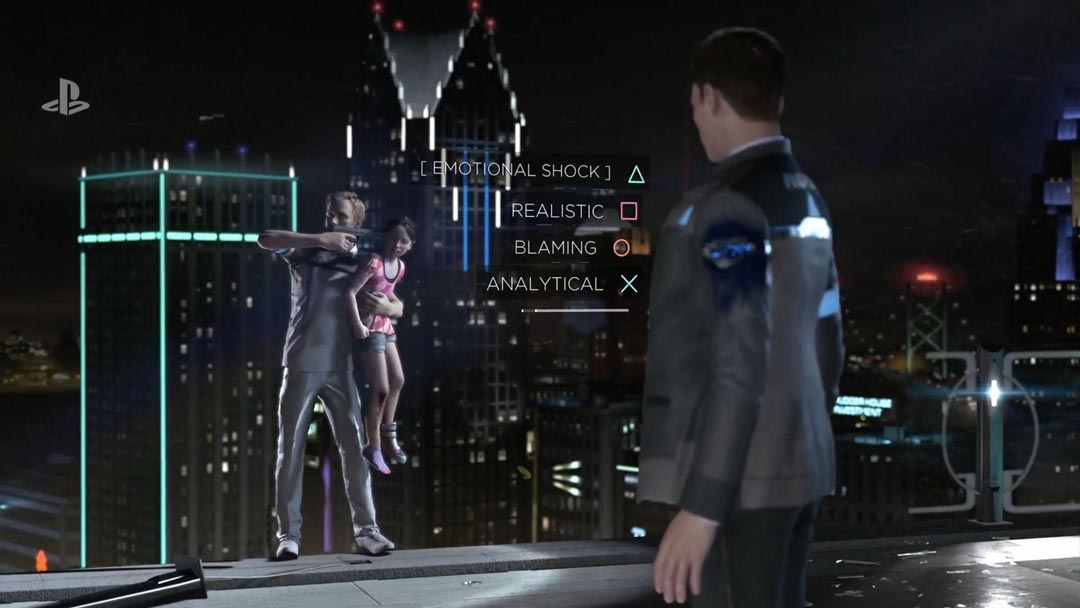
Why do story worlds matter?
First and foremost, story worlds are important because stories are important.
They’re one of the best ways to form connections between humans. Think about it. We’re drawn to stories because we see ourselves reflected in them. The way they help us understand our place in the universe and other people is probably unmatched. Add to this that stories provide links to ancient history, tradition, legends, and myths.
Worlds provide bigger playgrounds for our minds to go to and be entertained. In our opinion, these are the three key reasons why they matter:
1. They help us get away: Since they enable viewers to completely immerse themselves in a fictional world and develop a connection to the characters and their stories, they can contribute to the audience’s sense of immersion and escapism. In other words, fictional worlds are the only place where people can express themselves freely and without judgment.
2. Fans get to explore themselves: Story worlds can offer a wide-ranging and rich canvas for storytelling, opening up countless opportunities to investigate various topics and concepts. As followers become invested in the world and its characters, they produce fanfiction, fan art, and other forms of fan engagement.
3. Sensitive issues are discussed: They can be a tool for creating new worlds and delving into difficult social, political, and cultural problems, which are all issues of the real world.
Character Design in a Fictional Universe
Characters are central to a storyworld’s appeal, serving as the audience’s connection to the narrative. In a well-built storyworld, characters should align with the environment’s rules, history, and culture. Here’s how to integrate character design into worldbuilding:
Cultural Context: Ensure characters reflect the traditions, beliefs, and societal norms of the world. For example, a warrior from a tribal society may have tattoos or scars that symbolize their achievements.
Visual Representation: Use costumes, accessories, and physical traits to signify their role and origin. For instance, a scientist in a futuristic world might wear sleek, high-tech attire.
Narrative Role: Develop backstories that tie characters to significant world events, enhancing their depth and relatability.
By weaving character designs into the storyworld, creators can make their narratives more immersive and emotionally engaging.
What is worldbuilding?
With the idea of a fictional or non-fictional world (or a combination of both) in your mind, now it’s time to start building it.
Worldbuilding is a step in the story-writing process to set up where your story takes place. As you build a story world, you decide about the landscapes surrounding your characters, where they live, and how they interact with their environment.
It’s absolutely important to be able to answer almost every question about your world. All the gaps and loopholes should be covered in this section.
What is the purpose of a story world?
Imagine you want to tell a story. Are you going to write a book? Is there going to be a short film? How about comics?
No matter the platform, you’ll need a starting point to structure and outline the boundaries and the size of your world. Because as each story progresses, questions start to arise.
While it’s possible to tell a story without creating a universe, the narrative will be less coherent and less engaging to the audience.
4 Examples of Excellent Worldbuilding (With Analysis)
In worldbuilding, we create worlds with a big picture, but it’s through details like people, languages, cultures, places, and names that they come to life. From Hogwarts to the plague-infested industrial city of Dunwall in Dishonored, the creators have connected the dots for us to enjoy comprehensive worlds. These are four more that we particularly liked:
Game of Thrones
“Every time we were shown a new place, it actually felt new, and not just a name. The scenery and feel really changed.”
That’s according to our in-house studio art director, and other fans of the show.
Starting with worldbuilding techniques, the creators of Game of Thrones have done an excellent job of building a believable world. Moreover, the rich history and wide geography influence the characters’ actions and motivations.
There’s The Wall, made out of ice and old magic, which divides Westeros from Wildlings to keep the walkers away from the humans, a fortress in the shape of a warrior (The Titan of Braavos) with a unique defensive structure and an annual festival, Norvos and its bells, the longest bridge known to man that took 40 years to build that’s used for transport and commerce, and many other locations for the fans to explore. Of course, these places wouldn’t be interesting without people.
The depth of the characters and their interactions make this universe so unique. Along with epic battles and fantastical animals, the novel also explores the politics, power conflicts, and interpersonal connections that influence how things turn out.
But what really makes this world stand out is that each location has its own distinct culture, customs, and aesthetic. People of different regions have different languages and identities that were uniquely crafted. Nothing was out of place or lacking novelty and creativity. Even the details of people’s daily lives and clothing were distinctive. Armors, weapons, food, and drink, are thoughtfully made. This gives viewers a sense of immersion in the world and enables them to completely engage with the narrative.
The World of Skyrim
Skyrim is widely regarded as one of the best RPGs ever made, and much of this has to do with its immersive world-building. The game’s map (considered a country next to Tamriel, the world where the whole Elder Scrolls series takes place) is enormous, with dozens of different biomes, cultures, and factions. The game’s storylines, quests, and characters are all intricately linked to the world, making every encounter feel like a natural part of the world itself. Players get to explore the ruins of a long-dead civilization, learn about the rich histories of the various races and kingdoms in the game, and experience detailed environments that feel more like real places than virtual ones without ever getting tired.

Los Angeles – Blade Runner
Every video game or movie with futuristic elements was inspired by this world. Futurama, Deus Ex, The Fifth Element, and Cyberpunk owe their existence to the 1981 sci-fi film.
The universe of Blade Runner is an excellent illustration of masterful worldbuilding. Ridley Scott’s depiction of a dystopian future exhibited a high degree of attention to detail. With neon city skylines, pouring rain, and soaring signs advertising everything, the world is desolate, bleak, and polluted. The relationship between replicants and humans represents a brilliant, logical framework for society. The script does everything possible to create a truly immersive world in Blade Runner, which is set in an intricate, highly interconnected society.
We’re not shown many locations in this world to see if there’s diversity and coherence among different parts, but the very fact that it’s one of the pioneers of futuristic world depiction makes this version of Los Angeles one of the best worlds ever.
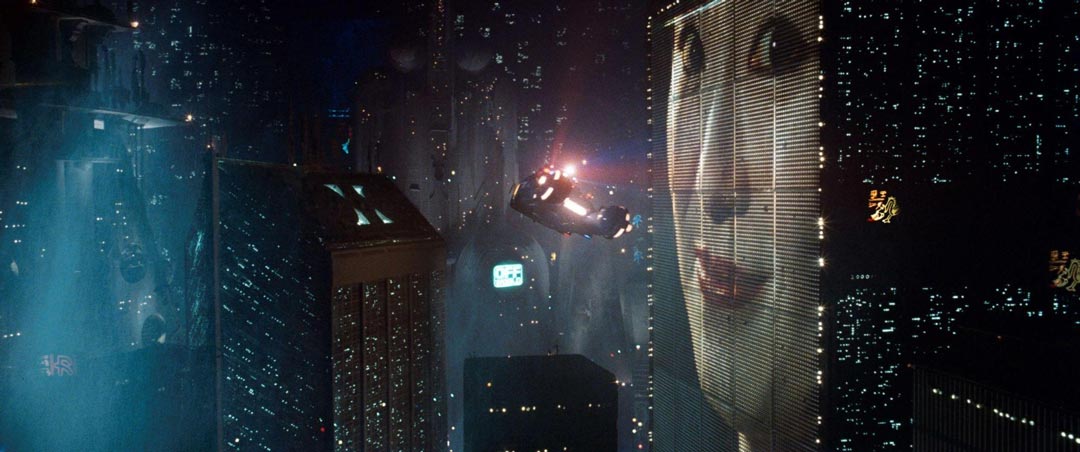
Middle-Earth
Probably the most famous fantasy world, The Lord of The Rings’ Middle-Earth is one of the most fully-realized fictional places in literature. J.R.R. Tolkien’s vast attention to even the tiniest details is unparalleled. His creation of the various races and creatures, each with their unique cultures and languages, living in Middle-Earth, makes it a truly vast, believable world. From the Ents, Hobbits, Elves, and Orcs to Rohirrim and Dwarfs, each race and culture feels unique and vital. The result is a complex, varied setting that feels like a real living place.
On top of that, Middle Earth is home to numerous beautiful landscapes and mesmerizing architecture with an extraordinary level of complexity.
7 Worldbuilding Tips for Every Storyteller
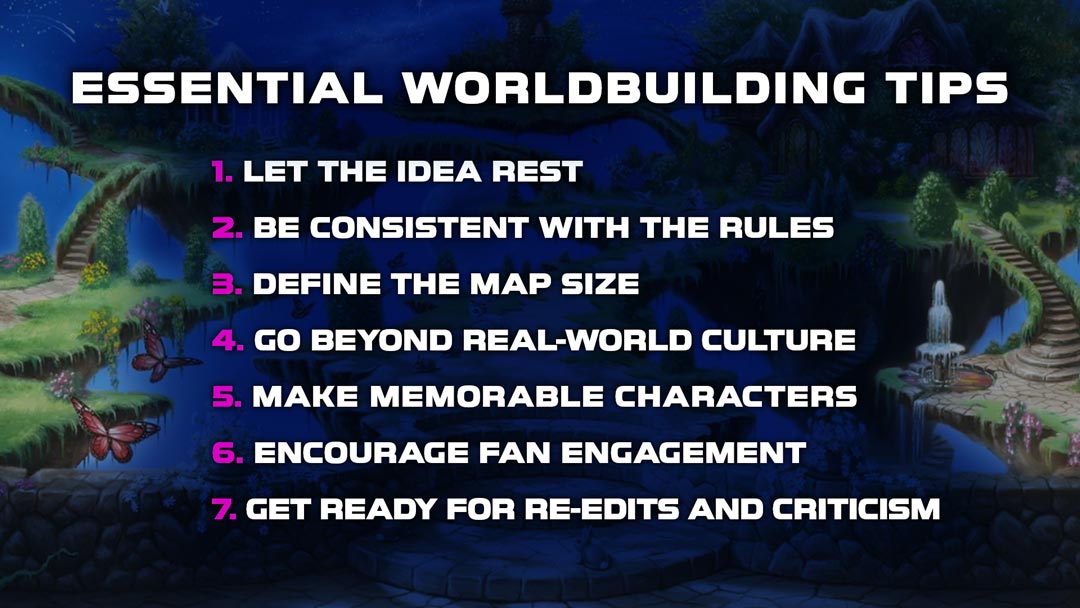
1. Let the idea rest
Yes! It’s great to be inspired and strike the pen and paper to write down ideas that just came to our minds. But it’s better to let them sink in a bit and work out the details.
Your readers or viewers are only exposed to the information you’ve exposed them to. Therefore, a quick start and finish will only confuse them.
Little you may know, this is only the “skeleton” of your story, and the details and further elements can be added in time and through review and
brainstorming sessions.
2. Be consistent with the rules
The last thing you need is fans and critics questioning the rules you’ve established. Fans become confused when there’s no explanation for a happening, so they start asking questions like:
“The character was imprisoned with no way to escape. How did he escape and make it just in time to save the world?”
“You said the land is always frozen. How did the warriors manage to survive months without food”?
“If robbery is punishable by death in this city, what happened in the criminals’ trial? Were the jury and the judge bribed? What happened?”
No matter how mythical, a fictional world should follow certain rules that make it feel like a real world.
The world can be very different from the one we live in, but the logical function and attention to detail can make it believable and cover plotholes that confuse readers and critics.
A well-executed worldbuilding means no gaps for the reader/viewer to fill in.
Besides plotholes, make sure you don’t contradict yourself throughout the story. The rules of physics, time periods, history, and laws shouldn’t go against what you have told the audience.
Be Consistent with the Rules!
Every fictional world operates under a set of rules that define its reality. Consistency in these rules builds credibility and enhances immersion. To ensure consistency:
- Document the Rules: Maintain a comprehensive guide covering physical laws, societal norms, and magic systems.
- Test for Logic: Regularly review your rules to identify and resolve contradictions.
- Provide Explanations: When breaking established rules, introduce new elements or plot points to justify the change. For example, if a character gains an ability previously deemed impossible, explain how and why it happened.
Consistency allows audiences to suspend disbelief and remain engaged in your storyworld.
3. Define how big or small
No, you don’t need to tell your audience EXACTLY how big your world is with numbers (i.e., 250 million km²), but you’ll need to map it out.
Draw a map, no matter how simple, mark chief locations, and put it on display for people so they have an idea of what’s where and how long it takes to travel from one place to another.
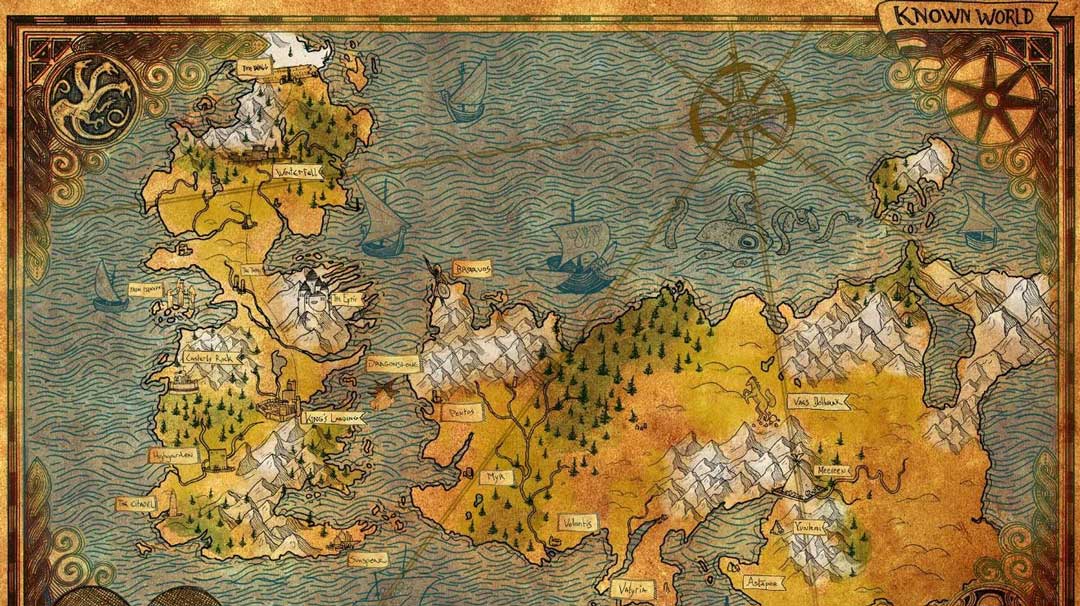
4. Avoid making a fictional version of real-world culture
People don’t want more aliens with big heads, long arms, and big, buggy eyes in a story where they appear with ray guns to eradicate the human race. Seriously, everyone’s pretty much had enough of this version of pop culture belief!
Do draw inspiration from reality and popular culture, but leave a lot of room for creativity and newer ideas. If your story and the universe it takes place in is a lazy stereotype, people will IMMEDIATELY lose interest.
5. Create compelling, memorable characters
Because what’s a good story world without special characters?
While making them one-of-a-kind and interesting, keep in mind the audience you wish to entertain.
One of our clients wanted to use a brand mascot in their big, luxurious amusement park. We designed a story universe for them which welcomed not one but three main characters with distinct motivations and backstories.
You can read about the story world in the penultimate chapter. As for character design, while giving them unique characteristics with cool things to say, we made sure a very, very wide range of audiences loved them because their resort wasn’t for a particular group, race, or religion.
6. Encourage Fan Engagement
Story writers and video creators who share fan art and fan fiction on their social media have a more dedicated fan base.
Not only it’s fun for fans, but they also get to explore their identities. Artists and writers, on the other hand, can enjoy the exposure fan arts create for them all over the internet.
7. Be open to edits and changes
Once you’re finished, it’s good to remember you may not be finished after all…
Read your story multiple times and print it out for others to read too. It can be nerve-racking to change something you’ve spent a lot of time on and seemingly perfected, but rest assured that it’s all worth it in the end.
Some writers get caught up in an eco-chamber and don’t change a single thing, so make sure you’re not one of them and keep asking yourself and different people questions.
Many fantasy writers use these two tools to help with their writing:
1. Forgefiction: A community-driven website where fiction fans are brought together to create new unique stories and imaginary worlds.
2. Mythrill: A Reading App for Sci-Fi and Fantasy lovers. Mythrill specializes in worldbuilding and interactive reading experience.
Fictional Universes in Business and Marketing
Brands and business owners are returning to using brand mascots to increase their reach to customers and make more personal connections.
And where do these characters function?
In a story universe, of course.
Coca-Cola’s universe is a great example. First introduced in 2006, “Happiness Factory” has been a key part of Coca-Cola’s marketing and brand identity. It features tiny, colorful, and cheerful characters who all participate in infusing each Coke bottle with joy.
The cute polar bears who enjoy drinking ice-cold drinks by the brand under starry skies with their good friend Santa are also part of the Coca-Cola universe.
Although Coca-Cola’s advertising campaigns, packaging, branding, and marketing methods are top-notch, creating fictional universes made them even more successful.
Our Worldbuilding and Story World creation services
Creating an engaging storyworld doesn’t always mean building something as vast and complex as the examples shared in this article. For projects like brand mascots, animated commercials, or TV spots, the scope can be tailored to your brand’s unique goals and audience. What matters most is crafting a world that resonates and deepens the connection between your brand and its audience.
Our team specializes in helping brands bring their creative visions to life through compelling storytelling, dynamic visuals, and innovative designs. Whether you’re looking to create a small-scale storyworld or a comprehensive branding campaign, we’re here to help.
Let’s bring your ideas to life! Contact us today to start building your storyworld.
Allen
